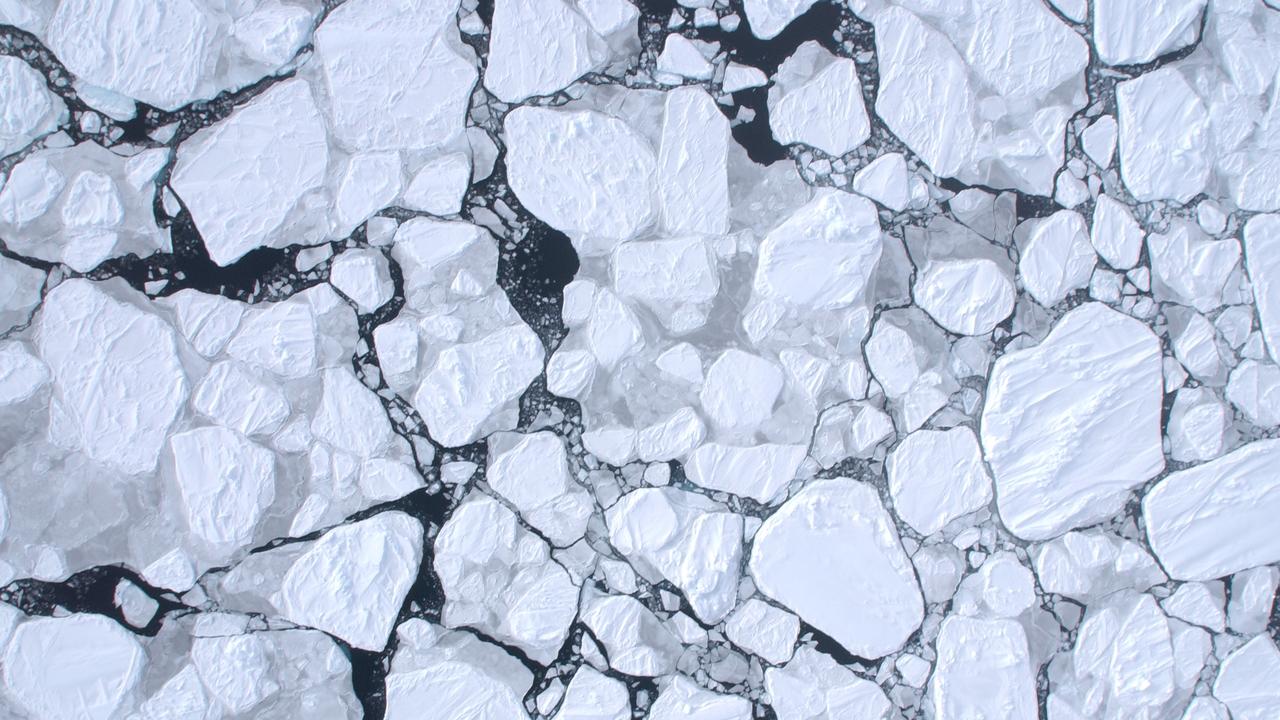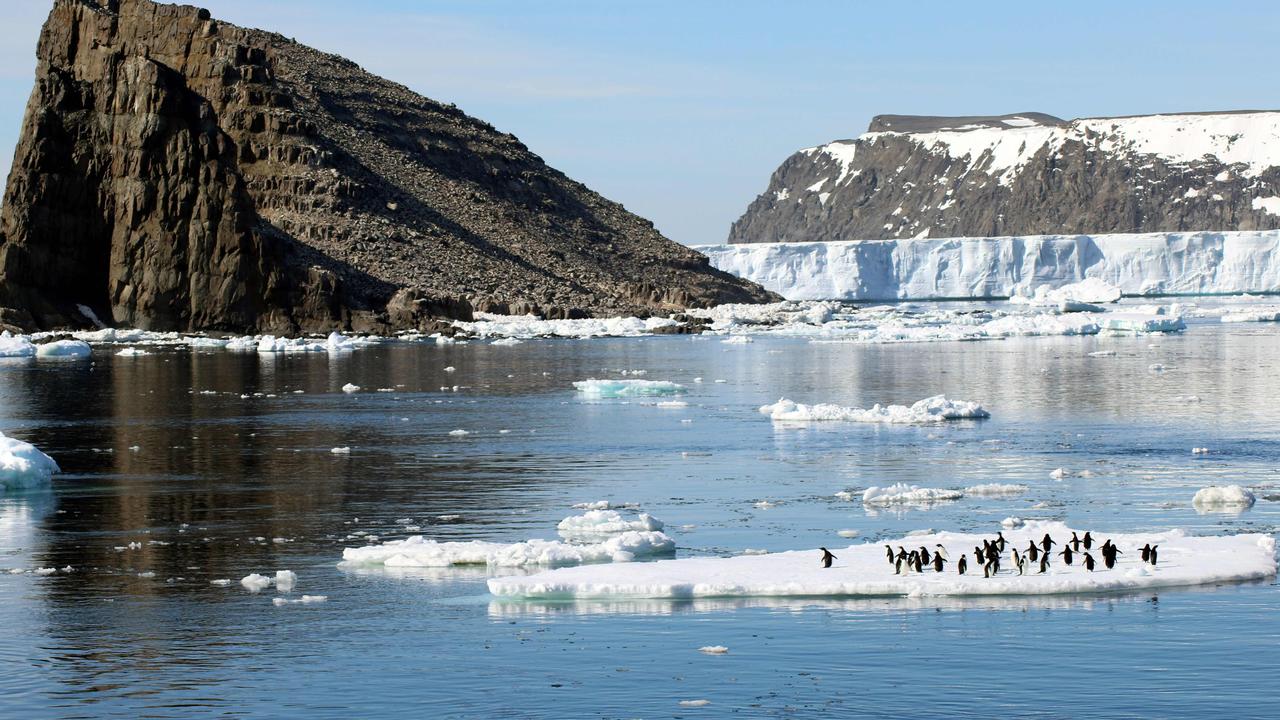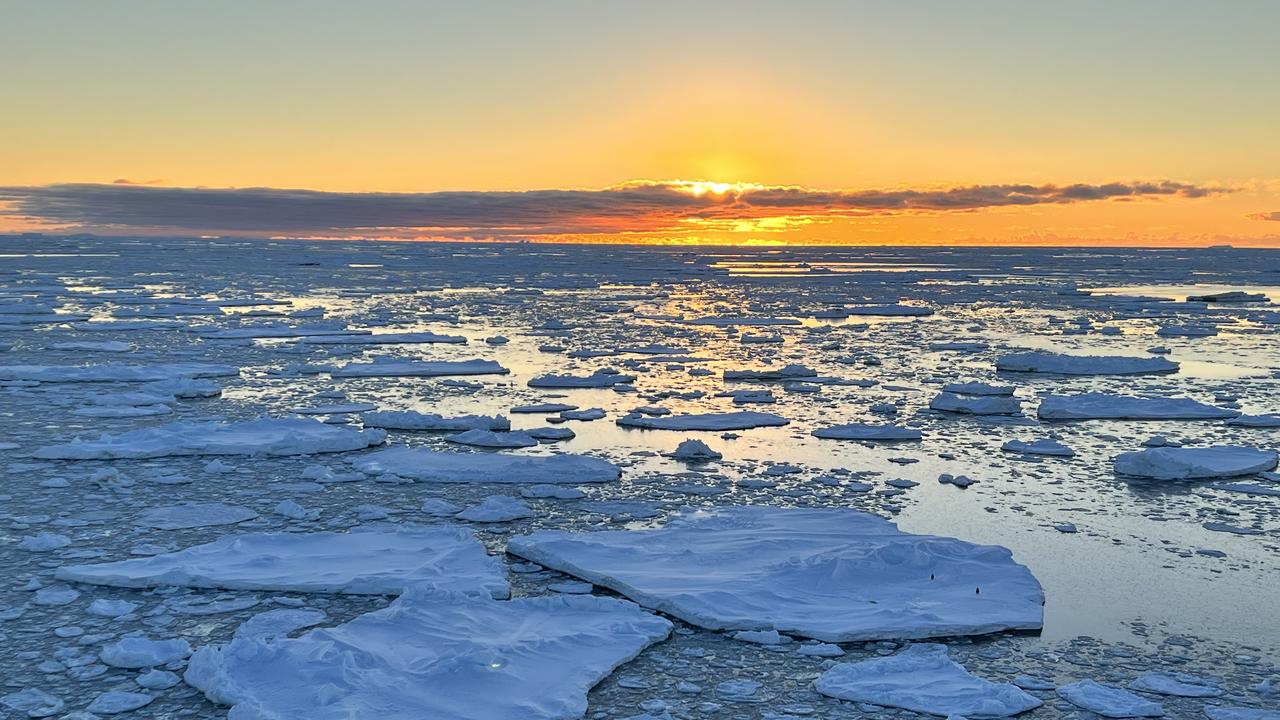‘It’s alarming’: Chunk the size of the NT vanishes from Antarctic
Sea ice surrounding Antarctica has dropped to historically low levels, with one expert labelling the decline “mind blowing”.

Ice roughly the size of the Northern Territory has disappeared from the Antarctic as sea ice continues to drop to “alarming” historically low levels.
Satellite data shows the sea-ice surrounding Antarctica has fallen below previous recorded winter levels, with scientists warning it could have significant consequences.
“It’s so far outside anything we’ve seen,” Walter Meier, from the National Snow and Ice Data Centre told the BBC.
“It’s almost mind-blowing.”
Latest data shows the ice floating on the surface of the Southern Ocean currently measures less than 17 million square kilometres.
It’s a drop in 1.5 million square kilometres from the September average, which is roughly equivalent to the size of the Northern Territory.
Antarctic sea ice extent is still tracking at record low levels, but the ice extent has increased more than average in the Bellingshausen and Amundsen Seas and in the Pacific Ocean. Read more in our latest sea ice analysis post: https://t.co/nS5v9qNtf0pic.twitter.com/LpEHctrsMw
— National Snow and Ice Data Center (@NSIDC) September 7, 2023
Dr Ariaan Purich, a climate scientist from Monash University said “everyone should be concerned” with the decline in sea ice, which provides a habitat for marine life and helps regulate temperatures.
“Sea ice is white and this means that it’s highly reflective so incoming sunlight that hits it is reflected back to space and this keeps a surface cold,” she told news.com.au,
“If we have less sea ice, this means that more sunlight is going to be absorbed by the surface ocean, and this is going to cause it to warm faster and this can actually amplify global warming.”

Dr Purich said while we’ve been in a low sea ice state since 2016, this year had been “unlike any other” on the observational record.
“In June and July, we had a lot less sea ice coverage around Antarctica than what you usually have. It was around 2.5 million square kilometres less than usual in the Southern Ocean so this is the size of Western Australia.”

A study co-authored by Dr Purich, published last week, found ocean warming is one factor behind the decline.
More Coverage
“We’ve now shown that the Southern Ocean has been warming over the past couple of decades, and this warming is because of increasing greenhouse gases,” she explained.
“It’s alarming, because of the scale of the changes … And this highlights the urgency of acting on climate change.
“Our world is changing, and we want to minimise it. So we really need to urgently cut emissions as fast as we can and as much as we can to minimise these big changes to the future.”





